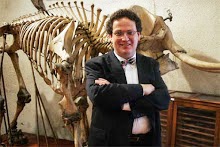WHAT'S THE POINT?
Why Leonardo's Mona Lisa overshadows the more captivating Genevra de'Benci escapes me, but that is an argument for another day. I find something about Genevra speaks to me about the quiet, contemplative condition of being human and that she, lacking most of the physical traits I would normally associate with beauty, is one of the most beautiful women ever put to canvas. When I was living in Washington, DC, I would sometimes steal off to the National Gallery on a lunch hour just to spend a few minutes with her, to marvel at Leonardo's technical abilities, yes, such as the reflection of light on each fine strand of her hair, but moreover, at the emotional connection that he was making with me across five centuries.
It is plausible that we could use isotope-ratio mass spec or other analyses to analyze the pigments in Leonardo's paints and uniquely identify these two works of art, but if that is all we knew of them, if we had not observed in careful detail and with deliberate attention the subtleties that make each unique, then what would we have achieved? Some practical things, perhaps, such as insurance against frauds and a rapid, objective way to say from which painting a small scraping of paint had come, but this robs us of so, so much. As important and impressively powerful as modern chemistry is, there is a human need in the world for art history, too.
DNA barcoding and phylogenetics are (at least for the sake of argument, as I have reservations) simple, cost-effective, objective, and require little knowledge of morphology of the organisms involved. Even if they allow us to identify species and to say the relative sequence of their origins in phylogenetic history, so what? Those are merely tools for applied work that tell us very little that we actually want or need to know about the organisms. The only reason to want to identify a species is so that we can access its properties for what it can teach us about anatomy, adaptation, selection, behavior, evolution, character transmutation, biogeography, or something similarly more complex, unique, and interesting. And the only reason to want a phylogeny is to help interpret, explain, and understand the origin and relationships among shared-derived evolutionary novelties. Unless we have done the hard scholarly work of developing and corroborating theories about what the complex and subtle characters are that make each species unique, there is really nothing of much interest to be explained or to be contemplated once a cladogram is reconstructed.
As we set out to explore and document that vast majority of species on earth not yet known to us, it would be wise to ask ourselves "What is the point?" If we only want an estimate of the number of living species, DNA-dominant systematics may be the most cost effective choice. But I cannot imagine a more trivial pursuit. Each species is for its own unique and improbable combination of characters truly a grand work of art. As we fund finding chemical signatures to identify these works of selection, let's remember to fund some art history too. It will make the exploration of biodiversity ever so much more interesting and of sufficient value to continue.



No comments:
Post a Comment